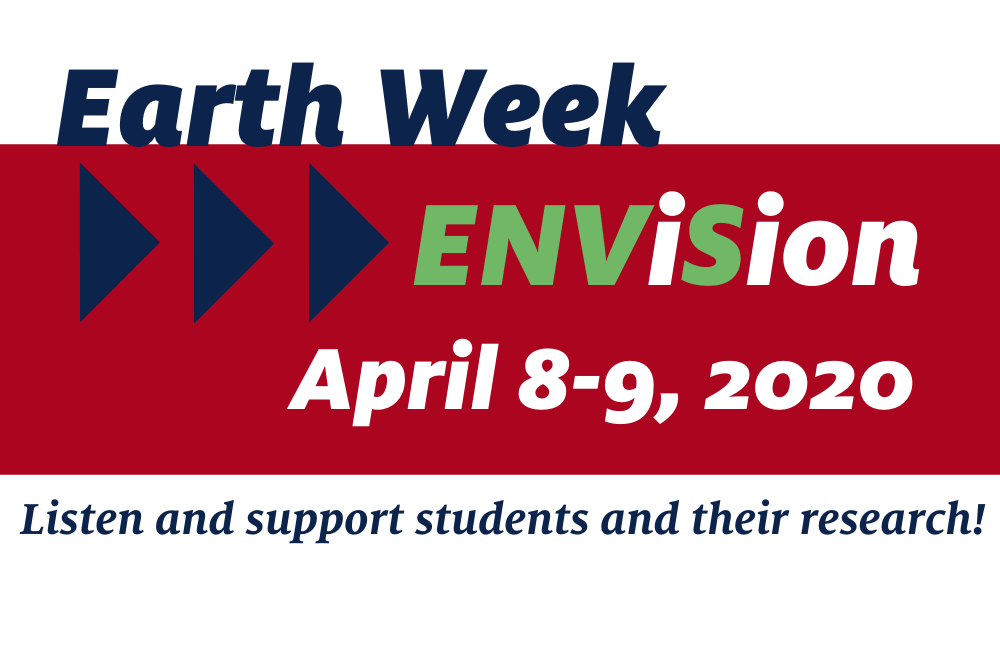Over 40 of our students created lightning talks on their research and projects for the virtual University of Arizona Earth Week 2020 (due to COVID-19)
Lightning talks are very short presentations (<5 minutes) to give a concise overview of scientific research.
Winning Lightning Talks
During a live virtual event with over 100 attendees across the School of Earth and Environmental Sciences, three environmental science students (Richelle Thomas, Chelsea Mendoza and Ariel Leger) placed in the top 4 out of fifteen lightning talks.
Watch talks by clicking on individual panels.
Doctoral candidate Richelle Thomas investigates how heavy metals from mines can contaminate plants the Diné (Navajo People) use for medicinal and spiritual purposes.
Learn how the accuracy of arsenic field test-kits is crucial to co-created citizen science projects from environmental science major Chelsea Mendoza.
Discover how mulch could help us restore the degraded drylands of southern Arizona—Master's student Ariel Leger explains.
Selected Other Lightning Talks
Several students opted to share their talks publicly after the University of Arizona Earth Week 2020.
Watch talks by clicking on individual panels.
Mine tailings contains arsenic, lead and other metals, and this toxic dust can blow into neighboring communities. Master’s student Nick Buchanan examines the biogeochemical response of plants used to stabilize this dust and metals in the mine tailings.
Numerical modeling is critical to understanding soil physics, and doctoral candidate Mohammad Gohardoust compares various models when examining soilless substrates used in greenhouses.
Listen to how Master's student Kunal Palawat uses cooking as a praxis to understand the complex dynamics of pollution, relationship to environment, environmental justice, and community resilience.
How do you create successful and impactful science art collaborations? Environmental science major Rae Pickens explains how she researched and created an art piece for the community of Tucson, Arizona.
Dissolved organic carbon is crucial to understanding the health of our stream ecosystems, as it is a source of carbon (and therefore available energy) to many organisms. Environmental science major Rylie Gosiak discusses findings from examining two sites after the Arizona monsoon season.
In arid regions, reclaimed water is critical for irrigation and agriculture. Doctoral student Sarah Abney discusses a collaborative project between the U.S. and Israel that uses environmental genomics to characterize viruses in treated wastewater.
How will our marine ecosystems respond to a warming world? Environmental science major Serena Conde worked in the Geosciences Department to examined plankton in sediment cores from the Northern Bay of Bengal in the Indian Ocean to find out.
To keep the production of leafy greens safe, we need to track pathogens in irrigation water. Microbiology major Justin Clark works with our faculty to examine fecal contamination from cows, pigs, chickens and humans, and the presence of any pathogens in Arizona irrigation canals.
Fecal contamination of irrigation water has been implicated in several food borne illness outbreaks in Arizona. Doctoral student Christina Morrison creates a tool using microbial source tracking to better track and understand fecal contamination, helping the agricultural community better protect their crops and mitigate potential outbreaks.
Legacy mine tailings in the desert Southwest are source of airborne arsenic. When dispersed by wind and potentially inhaled or ingested, it’s dangerous to human health. Master’s student Kendra Bonsey is looking at different toxicological assays to understand this.
Many military training and testing ranges have explosive compounds in the soil that are potentially hazardous to human and environmental health. Graduate student Chance Muscarella discusses his experimental design to examine the transport of these compounds specifically related to overland flow, or the movement of water down a slope to a water body.
Contaminants have been found in municipal drinking water. Although Tucson Water treats drinking water for the University of Arizona, environmental science major MacKenzie Moore examined water for the pipes of the ten oldest buildings on campus for potential fecal coliforms and perfluorinated chemicals.
Thanks to our 2020 ENViSion Planning Committee for adapting and organizing this event!
Roya AminiTabrizi, Kendra Bonsey, & Shelby Hoglund


